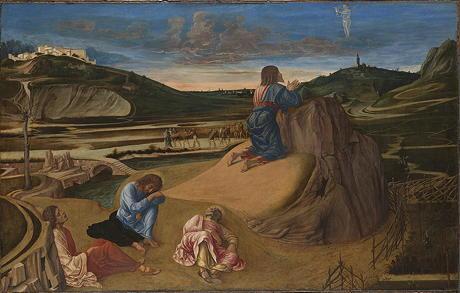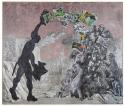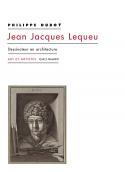Art Of The Day Weekly
#536 - from 6 December 2018 to 12 December 2018

Giovanni Bellini, The Agony in the Garden, circa 1458-60. Egg tempera on panel, 80.4 × 127 cm, The National Gallery, London.
IN THE AIR
Me Bellini, you Mantegna
LONDON – It is not a tale of two cities, as with Dickens. And yet: Mantegna and Bellini were bothers-in-law and good friends. But they were also the standard bearers of their respective cities– Mantua for the former, who settled there at the age of 30 and worked for the dynasty of the Gonzaga; Venice for the latter, where his clients included wealthy patricians. One was a sort of high-ranking civil servant, while the other was a successful entrepreneur. They were both born at the beginning of the 1430s and submitted the other to a stimulating rivalry. Pietà, landscapes and portraits of devotion are the sections in which we can compare their production. This exhibition likes to play on significant rapprochements: one between the two versions of Agony in the Garden, which have been hanging side by side for the last 150 years inside the National Gallery, or Presentation of Christ in the Temple, of which the one by Bellini moved to the Querini-Stampalia foundation, while the one by Mantegna moved to the Gemäldegalerie in Berlin. The paintings, after all, travelled as much as their painters at the time.
• Mantegna & Bellini at the National Gallery, until 27 January 2019.
EXHIBITIONS
Maeght, the collection continues to grow
SAINT-PAUL-DE-VENCE – Rome was not built in one day, neither is a beautiful collection. And this applies in particular to that of the Maeght Foundation. It is the result of purchases carried out over decades, nourished by the lasting friendships Marguerite and Aimé Maeght enjoyed with artists such as Miró or Braque, and it led to the opening of the Fondation in 1964, in a building designed by José Luis Sert. The foundation did not stop enriching itself at that moment. Over the last decade alone, it has welcomed over one hundred works in various donations, which have turned it into a living organism. Aside from Chagall, Calder, Léger, one will also admire in this exhibition more recent contributions, works by Gasiorowski, Immendorff or, in 2018, Assan Smati and Gina Pane.
• L’esprit d’une collection : les donations at the Fondation Maeght, from 1 December 2018 to 16 June 2019.
Crazy about Japan
VIENA – The fascination we have for the East would focus us today on China. But according to the periods, the object of our passion changes. At the turn of the century – i.e. in the 1900s-, when Japan had just come out of its isolation, it fascinated one and all. This exhibition, in line with the exploratory series, among which the one in the beginning of 2017 at the National Museum of Copenhagen, that studied the development of Japonism in Scandinavian countries. This one looks into the whole of Europe. The expected works by Monet and Gauguin are present. As well as works by such refined painters as Alfred Stevens, Georges Lacombe, and Emil Orlik.
• Fascination Japon at the Kunstforum Wien, until 20 January 2019.

Didier Faustino, A Home Is Not a Hole, 2016. Installation with stripped eucalyptus trunks, birch plywood, canvas, mosquito net, felt and fluorescent lighting, 600 x 700 x 400 cm. Created for the Maison de la Culture du Japon, Paris, 2016. Courtesy of the artist and of Michel Rein, Paris/Brussels, Galeria Filomena Soares, Lisbon; Parque Galería, Mexico. © Didier Fiúza Faustino, VEGAP, Bilbao, 2018.
Questions on architecture
BILBAO – The year 1997 was a symbolic turning point in the history of architecture: the inauguration of the Guggenheim Bilbao museum triggered off a new era for museums, which have increasingly become the gesture of a virtuoso rather than a container of artistic works. Too many observers pointed too quickly at the Frank Gehry building as being the culprit of this “Bilbao effect” - the revival of a town in crisis. Actually, many other factors contributed as well. But this date is a marker for the curators of this exhibition, on how architecture increasingly frees itself from its usual functions – to build – and becomes a field of experimentation of new forms, techniques, and uses. Columns blown up with helium, shafts converted into sculptures, floating houses: the works presented show a “think tank” laboratory that sometimes - not always - leads to practical results…
• Architecture Effects at the Guggenheim, from 5 December 2018 to 28 April 2019.
BOOKS
Lequeu, a mystery
Here is an enigmatic man, who will become even more so after reading this book. The author, who has followed and studied this Utopist drawer and architect of the level of Ledoux for decades, kept his promise! To introduce Jean Jacques Lequeu (1757-1826), who will be the object of an exhibition to open next week at the Petit Palais, Duboÿ has called in his contemporaries Charles Fourier and Brillat-Savarin, as well as unexpected imitators such as Marcel Duchamp or Salvador Dalí, up to Michel Foucault or the disputed Manfredo Tafuri, the Venetian professor who was the author’s thesis supervisor. A great part of Lequeu’s life remains wrapped up in mystery – such as his constructions and even his trip to Italy. He referred to himself as a library worm, who read and wrote at night, and who developed a greater part of his work in a brothel in the passage du Grand-Cerf… He received his training at the Ecole gratuite de dessin de Rouen (a novelty when founded in 1740) and invented in his Architecture civile temples, caves, chapels, ideal geometric pavilions, as well as very unconventional drawings.
• Jean Jacques Lequeu. Dessinateur en architecture, by Philippe Duboÿ, Gallimard, 2018, 320 p., €26.


